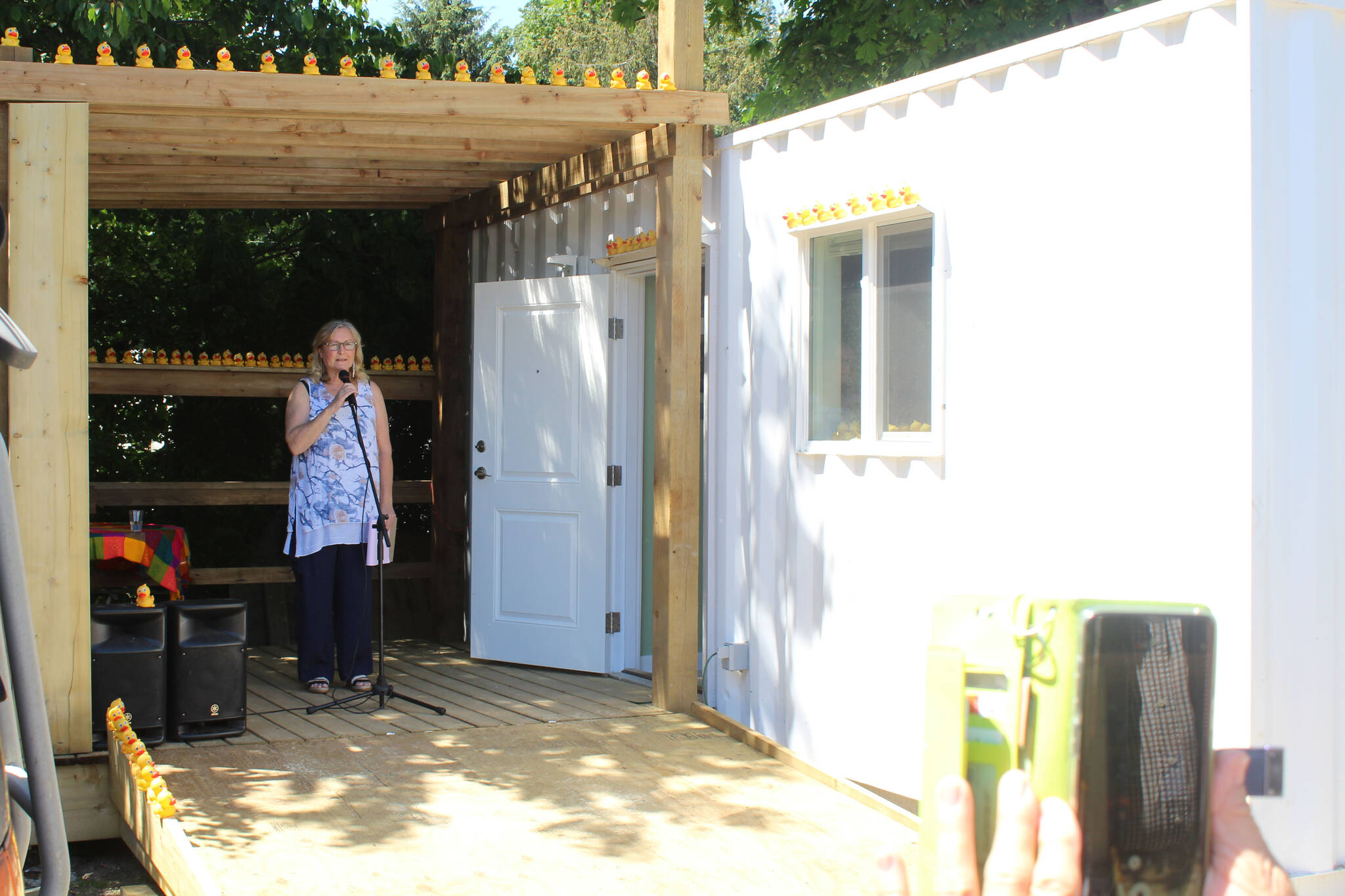Sometimes the Homer City Council digs into the grunt work of running a city — sewer and water, roads, taxes and budgets. At Tuesday’s council meeting, held a day later than usual because of the Seward’s Day holiday, the council got into something more esoteric.
Aesthetics.
In unanimous votes, the council took these actions:
• On introduction of Ordinance 22-17, amending Homer City Code to exclude the use of Connex boxes or shipping containers for dwelling units, the council voted not to introduce the ordinance.
• On Resolution 21-073, updating the city gift, donation and art policies to add a section on murals, the council adopted the resolution.
• On Resolution 22-021, the council accepted the donation of an art work by Deland Anderson titled “Seven: Pleiades, Samurai.”
• And, on Resolution 22-022, a resolution accepting a donation from Bunnell Street Arts Center of a two-part mural by Homer artist Kim McNett inspired by the Peatland Project, the council amended the resolution to place the art “at a place to be determined” rather than on the exterior of the airport, and approved the resolution.
The Connex ban had been forwarded to the council by the Homer Advisory Planning Commission on the recommendation that the city not allow shipping containers to be used for houses. In a memo from council member Jason Davis expressing concerns about the ordinance, Davis included pamphlets showing how used metal containers can be repurposed as homes.
For example, in Comox Valley, Vancouver Island, British Columbia, groups providing homes for unhoused people have been converting shipping containers into tiny houses.
Ordinance 22-17 had been placed on the consent agenda. In the process of considering ordinances, they are first introduced and then later go to first and second reading for public hearings and consideration. Most ordinances go on the consent agenda for introduction, but council member Donna Aderhold pulled the item from the agenda.
In discussion on whether or not to introduce the ordinance, Davis thanked the planning commission for its hard work, but then said, “I’m always a little bit hesitant to rush in with a new government regulation.”
He noted that at a recent council visioning retreat, the council had discussed introducing building codes for the city — another proposal by the planning commission. Davis said he wasn’t sure the council should look at one aspect of building codes if it was going to adopt a more comprehensive set of regulations.
“I’m not sure it makes sense to rush forward with a special ordinance just to address this one small aspect of building in Homer,” he said.
Council member Shelly Erickson said shipping containers could be used to address a housing shortage among seasonal workers. She had recently visited Seward, where a man converts the containers into worker housing there.
“The thing about it is that it is very, very affordable housing for employees and for the employers also,” she said. “… There’s options there and we need to keep our options open.”
Council member Rachel Lord also questioned if it was right to focus on one kind of building material. She noted that the planning commission had raised issues about Connexes regarding health and safety and aesthetics.
“They’re not unique to Connexes,” she said of those issues. “They’re unique to how somebody builds. … I don’t feel like the pros and cons and costs and benefits of specific building materials is a great thing to do piecemeal at the council level.”
Council member Aderhold noted that there had been discussion of tabling and postponing the ordinance, but that the issue was to introduce it.
“If we were to introduce it, it would give the opportunity for people to weigh in if they do,” she said.
Mayor Ken Castner said his preference would be to dispense with the ordinance and include the issue of building materials or structures in a more holistic ordinance.
After discussion, the council did just that, voting 6-0 to not introduce the ordinance.
On Resolution 21-073, the council considered revisions to the city’s donation and art policies proposed by the Parks, Art, Recreation and Culture Advisory Commission. Those changes codify how the city accepts and regulates murals placed on public buildings. Erickson asked how the city could remove murals citizens might no longer want.
“I mean, sometimes they are public or they’re private art,” she said. “… Sometimes they need to be changed.”
Lord clarified that the resolution only applied to murals on public property. Many murals people don’t like are on private property. The resolution wouldn’t “address the concerns of the people in terms of art that’s actually just not on city property,” she said. “It is not ours. It never was. We didn’t commission it. It didn’t go through a public process.”
An earlier draft of the mural policy applied to private property. Lord said it was right to be taken out.
“I 100% oppose the city getting into a position of ever regulating what somebody paints on their building,” she said.
Addressing Erickson’s concerns, City Manager Rob Dumouchel said issues of how the mural would be maintained, how it would be repaired and how it would be selected would be part of the contract process with the city and the artists.
To show how that works, the council also approved donations of two art works, a painting by Deland Anderson that had been displayed at the Homer Public Library he donated to the city and a mural by Kim McNett. The McNett mural is being done through a commission from Bunnell Street Arts Center.
Erickson had said concerns about the placement of McNett’s mural, saying she wasn’t sure if it would be appropriate to be placed at the entrance to the Homer Airport. She also expressed concerns about how well it would hold up in harsh weather.
The council amended the resolution to make the location less specific.
Reach Michael Armstrong at marmstrong@homernews.com.


